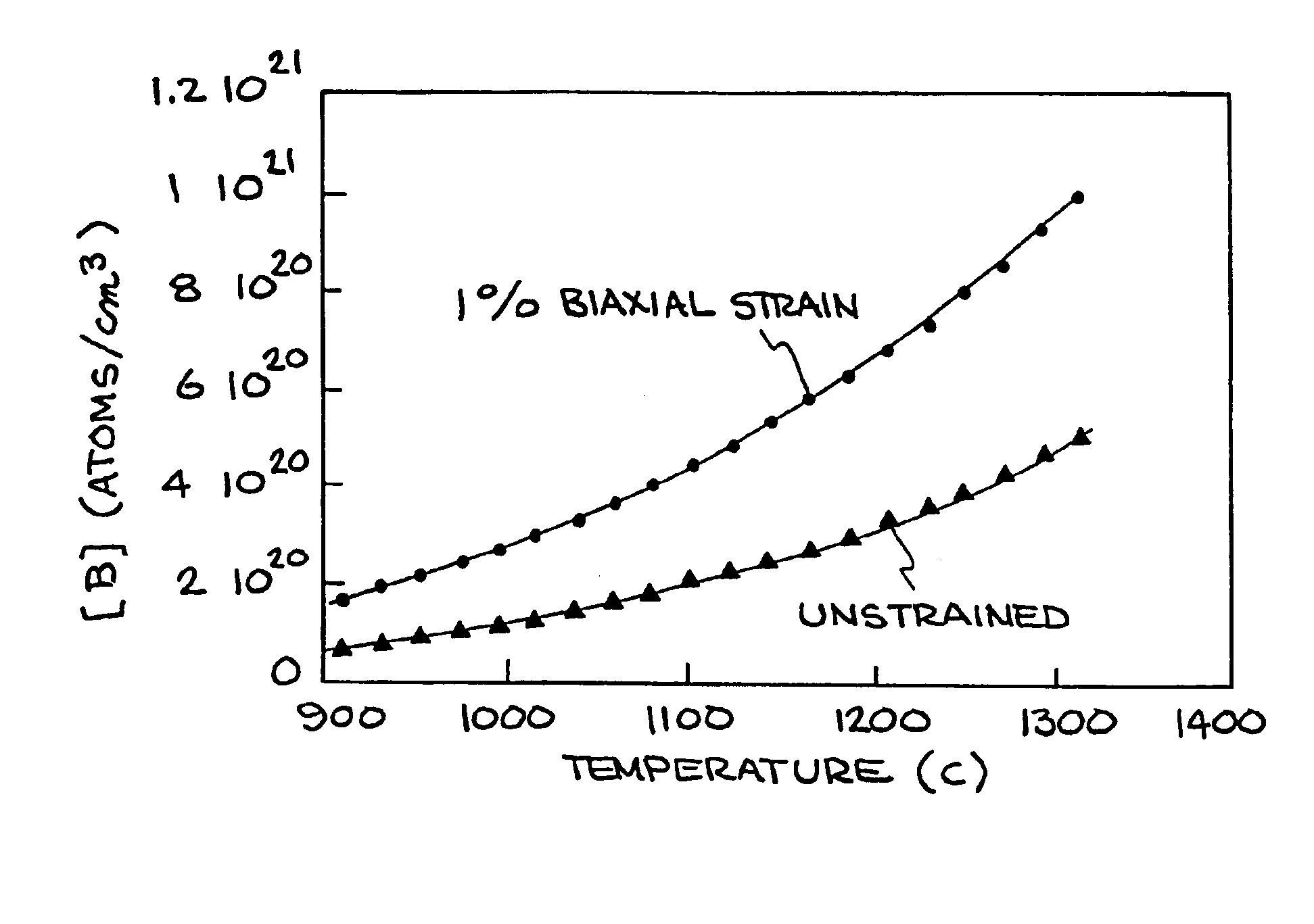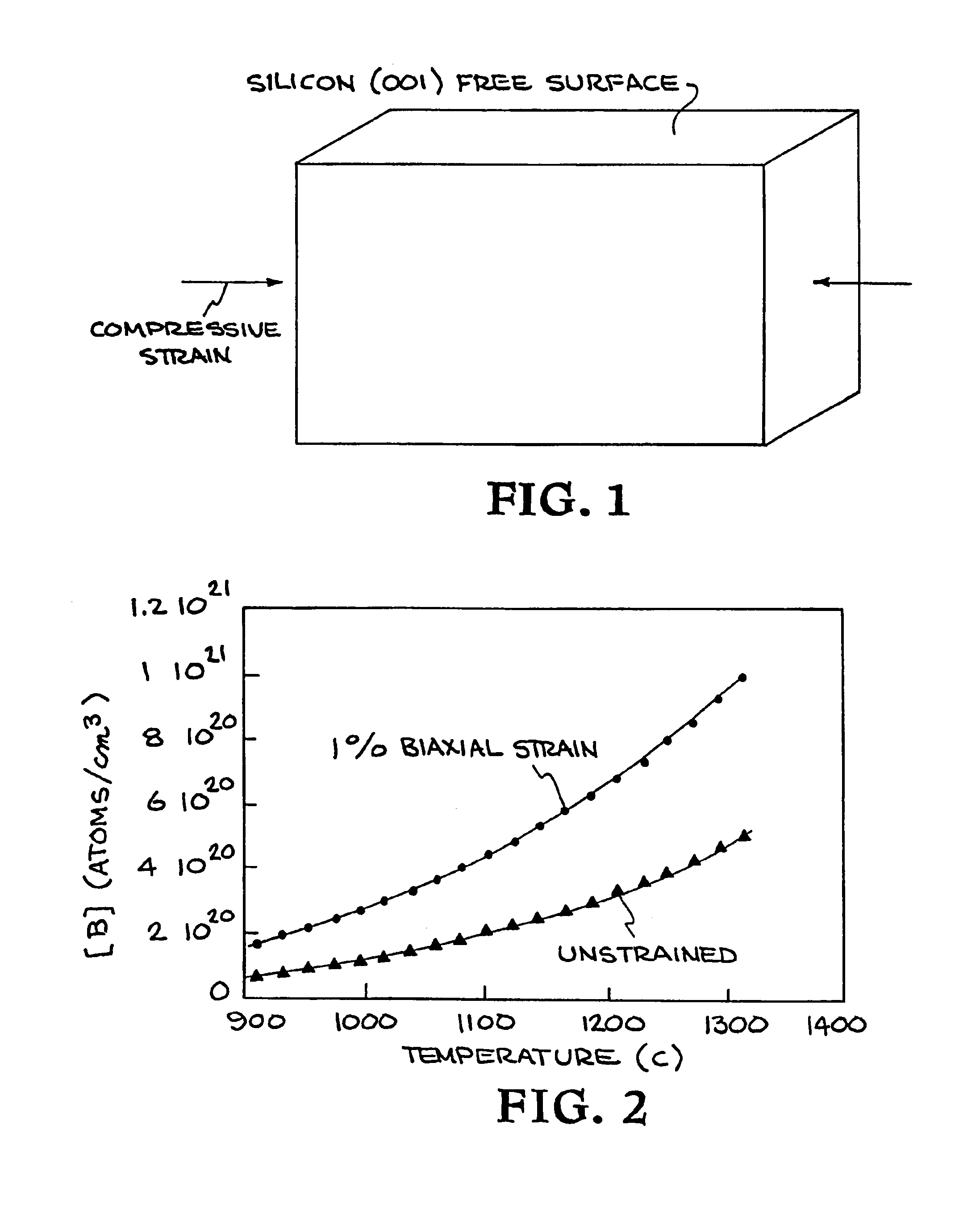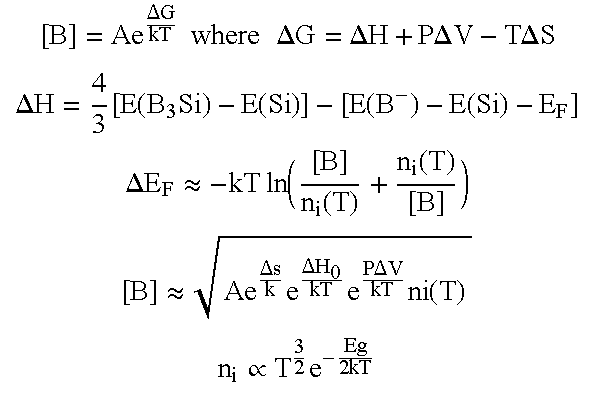Semiconductor material and method for enhancing solubility of a dopant therein
- Summary
- Abstract
- Description
- Claims
- Application Information
AI Technical Summary
Benefits of technology
Problems solved by technology
Method used
Image
Examples
Embodiment Construction
The present invention involves increasing the solubility of dopants in semiconductor materials, particularly increasing the solubility of boron and indium in silicon. This is basically accomplished by placing a strain on the silicon at elevated temperatures. For example, it has been demonstrated that a 1% compressive strain raises the equilibrium solubility by 100% at 1100° C. for boron, and for indium a 1% tensile strain at 1100° C. corresponds to an enhancement of solubility by 200%. This method for enhancing the solubility of boron and indium in silicon resulted from the performance of first-principles quantum mechanical calculation relative to the temperature dependence of the equilibrium solubility of two important p-type dopants in silicon, namely boron and indium under various strain conditions. It was found that the equilibrium thermodynamic solubility of size-mismatched impurities, such as boron and indium in silicon, can be raised significantly if the silicon substrate is ...
PUM
 Login to View More
Login to View More Abstract
Description
Claims
Application Information
 Login to View More
Login to View More - R&D
- Intellectual Property
- Life Sciences
- Materials
- Tech Scout
- Unparalleled Data Quality
- Higher Quality Content
- 60% Fewer Hallucinations
Browse by: Latest US Patents, China's latest patents, Technical Efficacy Thesaurus, Application Domain, Technology Topic, Popular Technical Reports.
© 2025 PatSnap. All rights reserved.Legal|Privacy policy|Modern Slavery Act Transparency Statement|Sitemap|About US| Contact US: help@patsnap.com



